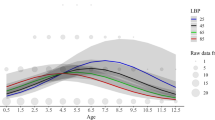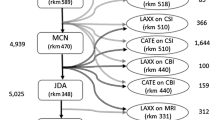Abstract
Effective species management and conservation relies on accurate estimates of vital rates and an understanding of their link to environmental variables. We used multistate capture–mark–recapture models to directly quantify effects of predation on age-specific survival of black-tailed deer Odocoileus hemionus columbianus in California, USA. Survival probabilities were derived from individual encounter histories of 136 fawns and 57 adults monitored over 4 years. Based on results from our survival analysis we parameterized a Lefkovitch matrix and used elasticity analyses to investigate contributions of mortality due to predation to changes in population growth. We found strong evidence for age-specific survival including senescence. Survival of females >1 year old was consistently low (0.56 ± 0.18 for yearlings, 0.77 ± 0.13 for prime-aged females, and 0.55 ± 0.08 for senescent individuals), primarily due to high puma Puma concolor predation during summer. Predation from black bears Ursus americanus and coyotes Canis latrans was the primary cause for low annual survival of fawns (0.24 ± 0.16). Resulting estimates of population growth rates were indicative of a strongly declining population (λ = 0.82 ± 0.13). Despite high sensitivity to changes in adult survival, results from a lower-level elasticity analysis suggested that predation on fawns was the most significant individual mortality component affecting population decline. Our results provide a rare, direct link between predation, age-specific survival and the predicted population decline of a common ungulate species. The magnitude of predation was unexpected and suggests that ungulates in multi-predator systems struggle to cope with simultaneous reductions in survival probabilities from predators targeting different age classes.




Similar content being viewed by others
References
Allen ML (2014) The ecology and behaviour of pumas (Puma concolor) in northern California. PhD Dissertation, Victoria University of Wellington
Allen ML, Elbroch LM, Casady DS, Wittmer HU (2014) Seasonal variation in the feeding ecology of pumas (Puma concolor) in northern California. Can J Zool 92:397–403
Alvarez-Buylla ER, Slatkin M (1993) Finding confidence limits on population growth rates: Monte Carlo test of a simple analytic method. Oikos 68:273–282
Ballard WB, Lutz D, Keegan TW, Carpenter LH, deVos JC Jr (2001) Deer-predator relationships: a review of recent North American studies with emphasis on mule and black-tailed deer. Wildl Soc Bull 29:99–115
Bleich VC, Taylor TJ (1998) Survivorship and cause-specific mortality in five populations of mule deer. West N Am Nat 58:265–272
Burnham KP, Anderson DR (2002) Model selection and multi-model inference: a practical information-theoretic approach. Springer, New York
Casady DS, Allen ML (2013) Handling adjustments to reduce chemical capture-related mortality in black-tailed deer. Calif Fish Game 99:104–109
Caswell H (2001) Matrix population models. Sinauer Associates, Sunderland
Choquet R, Rouan L, Pradel R (2009) Program E-SURGE: a software application for fitting multievent models. In: Thomson DL, Cooch EG, Conroy MJ (eds) Environmental and ecological statistics. Springer, New York, pp 845–865
Creel S, Christianson D (2008) Relationships between direct predation and risk effects. Trends Ecol Evol 23:194–201
De Roos AM, Schellekens T, Van Kooten T, Persson L (2008) Stage-specific predator species help each other to persist while competing for a single prey. Proc Natl Acad Sci USA 105:13930–13935
DeCesare NJ, Hebblewhite M, Robinson HS, Musiani M (2010) Endangered apparently: the role of apparent competition in endangered species conservation. Anim Conserv 13:353–362
DeCesare NJ, Hebblewhite M, Bradley M, Hervieux D, Neufeld L, Musiani M (2014) Linking habitat selection and predation risk to spatial variation in survival. J Anim Ecol 83:343–352
Festa-Bianchet M, Coulson T, Gaillard JM, Hogg JT, Pelletier F (2006) Stochastic predation events and population persistence in bighorn sheep. Proc R Soc Lond B 273:1537–1543
Forrester TD, Wittmer HU (2013) A review of the population dynamics of mule deer and black-tailed deer Odocoileus hemionus in North America. Mamm Rev 43:292–308
Gaillard JM, Yoccoz NG (2003) Temporal variation in survival of mammals: a case of environmental canalization? Ecology 84:3294–3306
Gaillard JM, Festa-Bianchet M, Yoccoz NG (1998) Population dynamics of large herbivores: variable recruitment with constant adult survival. Trends Ecol Evol 13:58–63
Gaillard JM, Festa-Bianchet M, Yoccoz NG, Loison A, Toigo C (2000) Temporal variation in fitness components and population dynamics of large herbivores. Annu Rev Ecol Syst 31:367–393
Gauthier G, Lebreton JD (2008) Analysis of band-recovery data in a multistate capture-recapture framework. Can J Stat 36:59–73
Gervasi V, Nilsen EB, Sand H, Panzacchi M, Rauset GR, Pedersen HC, Kindberg J, Wabakken P, Zimmermann B, Odden J, Liberg O, Swenson JE, Linnell JDC (2012) Predicting the potential demographic impact of predators on their prey: a comparative analysis of two carnivore–ungulate systems in Scandinavia. J Anim Ecol 81:443–454
Gimenez O, Choquet R, Lebreton JD (2003) Parameter redundancy in multistate capture-recapture models. Biom J 45:704–722
Hebblewhite M, Merrill EH (2011) Demographic balancing of migrant and resident elk in a partially migratory population through forage–predation tradeoffs. Oikos 120:1860–1870
Hebblewhite M, White CA, Nietvelt CG, McKenzie JA, Hurd TE, Fryxell JM, Bayley SE, Paquet PC (2005) Human activity mediates a trophic cascade caused by wolves. Ecology 86:2135–2144
Heisey DM, Fuller TK (1985) Evaluation of survival and cause-specific mortality rates using telemetry data. J Wildl Manag 49:668–674
Holt RD, Lawton JH (1994) The ecological consequences of shared natural enemies. Annu Rev Ecol Syst 25:495–520
Hopcraft JGC, Olff H, Sinclair ARE (2010) Herbivores, resources and risks: alternating regulation along primary environmental gradients in savannas. Trends Ecol Evol 25:119–128
Johnson HE, Mills LS, Stephenson TR, Wehausen JD (2010) Population-specific vital rate contributions influence management of an endangered ungulate. Ecol Appl 20:1753–1765
Johnstone-Yellin TL, Shipley LA, Myers WL, Robinson HS (2009) To twin or not to twin? Trade-offs in litter size and fawn survival in mule deer. J Mammal 90:453–460
Knopff KH, Knopff AA, Kortello A, Boyce MS (2010) Cougar kill-rate and prey composition in a multi-prey system. J Wildl Manag 74:1435–1447
Laundré JW (2010) Behavioral response races, predator–prey shell games, ecology of fear, and patch use of pumas and their ungulate prey. Ecology 91:2995–3007
Lebreton JD, Nichols JD, Barker RJ, Pradel R, Spendelow JA (2009) Modeling individual animal histories with multistate capture–recapture models. Adv Ecol Res 41:87–173
Leopold A, Sowls LK, Spencer DL (1947) A survey of over-populated deer ranges in the United States. J Wildl Manag 11:162–177
Lomas LA, Bender LC (2007) Survival and cause-specific mortality of neonatal mule deer fawns, north-central New Mexico. J Wildl Manag 71:884–894
McNay RS, Voller JM (1995) Mortality causes and survival estimates for adult female Columbian black-tailed deer. J Wildl Manag 59:138–146
Monteith KL, Bleich VC, Stephenson TR, Pierce BM, Conner MM, Kie JG, Bowyer RT (2014) Life-history characteristics of mule deer: effects of nutrition in a variable environment. Wildl Monogr 186:1–62
Murray DL (2006) On improving telemetry-based survival estimation. J Wildl Manag 70:1530–1543
Pierce BM, Bowyer RT, Bleich VC (2004) Habitat selection by mule deer: forage benefits or risk of predation? J Wildl Manag 68:533–541
Prugh LR, Stoner CJ, Epps CW, Bean WT, Ripple WJ, Laliberte AS, Brashares JS (2009) The rise of the mesopredator. Bioscience 59:779–791
Robinson HS, Wielgus RB, Gwilliam JC (2002) Cougar predation and population growth of sympatric mule deer and white-tailed deer. Can J Zool 80:556–568
Sams MG, Lochmiller RL, Hellgren EC, Warde WD, Varner LM (1996) Morphometric predictors of neonatal age for white-tailed deer. Wildl Soc Bull 24:53–57
Schaub M, Pradel R (2004) Assessing the relative importance of different sources of mortality from recoveries of marked animals. Ecology 85:930–938
Sih A, Englund G, Wooster D (1998) Emergent impacts of multiple predators on prey. Trends Ecol Evol 13:350–355
Sinclair ARE, Krebs CJ (2002) Complex numerical responses to top-down and bottom-up processes in vertebrate populations. Philos Trans R Soc Lond B 357:1221–1231
Sinclair ARE, Pech RP (1996) Density dependence, stochasticity, compensation, and predator regulation. Oikos 75:164–173
Sinclair ARE, Mduma S, Brashares JS (2003) Patterns of predation in a diverse predator–prey system. Nature 425:288–290
Stubben CJ, Milligan BG (2007) Estimating and analyzing demographic models using the popbio package in R. J Stat Softw 22(11):1–23
Tavecchia G, Adrover J, Navarro AM, Pradel R (2012) Modelling mortality causes in longitudinal data in the presence of tag loss: application to raptor poisoning and electrocution. J Appl Ecol 49:297–305
White GC, Garrott RA, Bartmann RM, Carpenter LH, Alldredge AW (1987) Survival of mule deer in northwest Colorado. J Wildl Manag 51:852–859
Wilmers CC, Post E, Hastings A (2007) The anatomy of predator–prey dynamics in a changing climate. J Anim Ecol 76:1037–1044
Wittmer HU, Sinclair ARE, McLellan BN (2005) The role of predation in the decline and extirpation of woodland caribou. Oecologia 144:257–267
Wittmer HU, Elbroch LM, Marshall AJ (2013) Good intentions gone wrong: did conservation management threaten endangered huemul deer in the future Patagonia National Park? Oryx 47:393–402
Wood AK, Short RE, Darling AE, Dusek GL, Sasser RG, Ruder CA (1986) Serum assays for detecting pregnancy in mule and white-tailed deer. J Wildl Manag 50:684–687
Acknowledgments
Funding for this project was provided by the California Department of Fish and Wildlife, the California Deer Association and the Mendocino County Blacktail Association. TDF acknowledges support from the Switzer foundation. We thank the numerous students, volunteers, and scientific aides for their invaluable contributions to fieldwork. Sarah Cubaynes, Olivier Gimenez and Shirley Pledger provided helpful comments on previous drafts of this manuscript. Comments from 2 anonymous reviewers greatly improved the final manuscript.
Author information
Authors and Affiliations
Corresponding author
Electronic supplementary material
Below is the link to the electronic supplementary material.
Rights and permissions
About this article
Cite this article
Marescot, L., Forrester, T.D., Casady, D.S. et al. Using multistate capture–mark–recapture models to quantify effects of predation on age-specific survival and population growth in black-tailed deer. Popul Ecol 57, 185–197 (2015). https://doi.org/10.1007/s10144-014-0456-z
Received:
Accepted:
Published:
Issue Date:
DOI: https://doi.org/10.1007/s10144-014-0456-z




